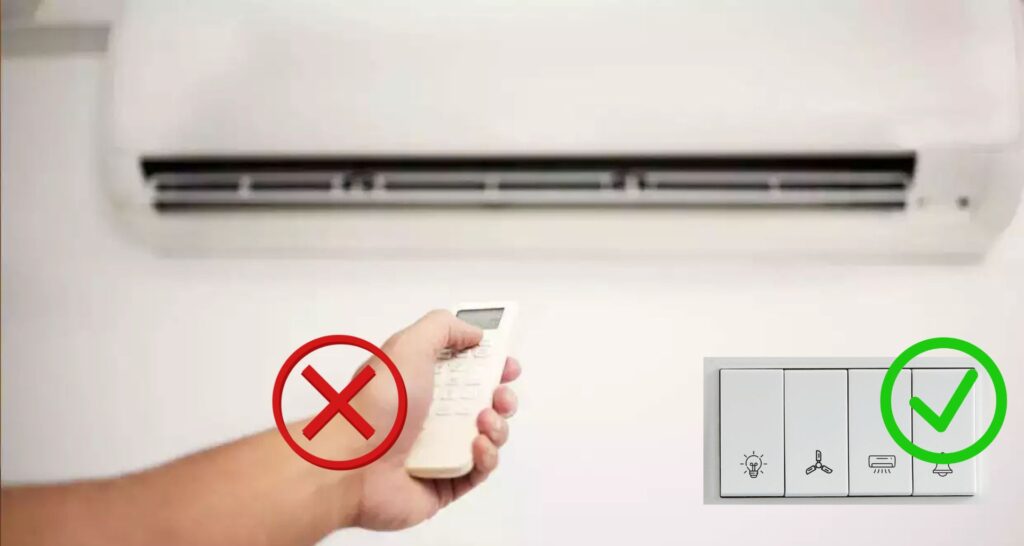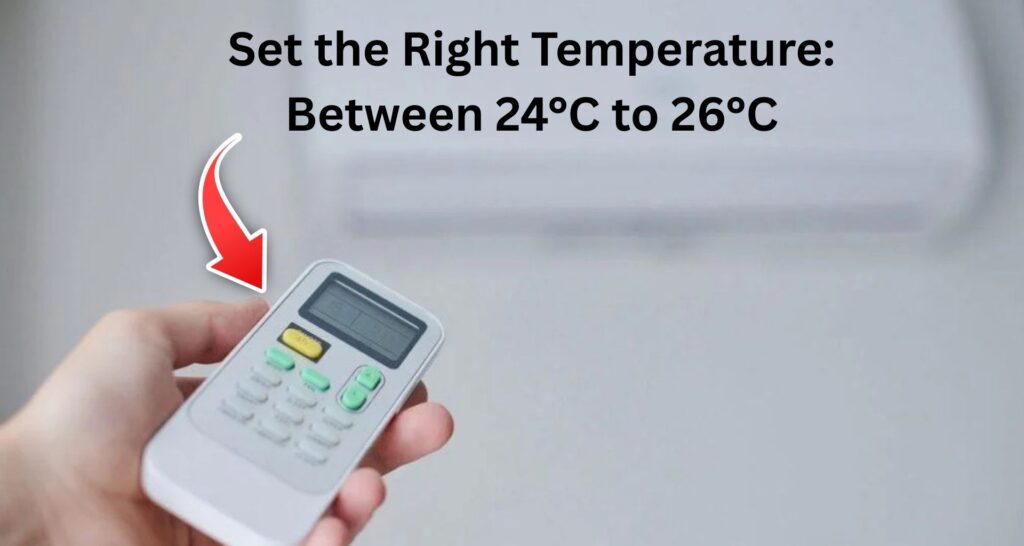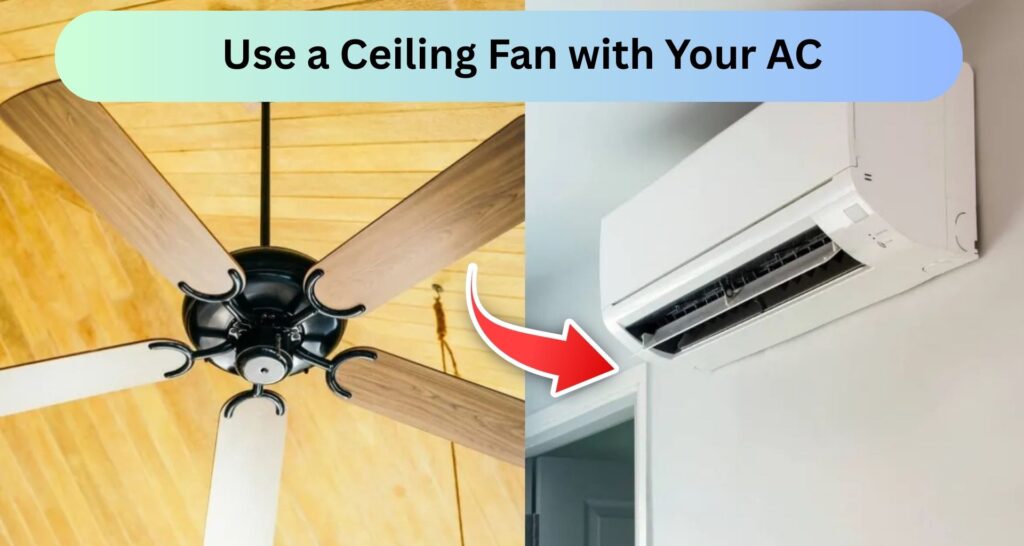
Run Your AC Without Fear of High Bills: 5 Expert Tips to Save Energy and Money
When summer temperatures rise, an air conditioner (AC) turns from a luxury into a daily necessity. Whether you’re working from home, relaxing with family, or trying to get a good night’s sleep, an AC keeps you cool and comfortable.
But that comfort often comes with a price – a high electricity bill.
The good news is, you don’t have to stop using your AC to save money. With a few simple and smart tips, you can enjoy cool air and still lower your power bill.
In this easy-to-follow guide, we’ll share 5 expert tips that are practical, effective, and actually work.
Why Saving AC Energy Matters
Saving energy from your AC is not just about cutting your bill. It’s also good for the environment. Air conditioners use a lot of electricity. When that electricity comes from burning coal or gas, it adds to air pollution and global warming.
By saving electricity, you:
- Help reduce pollution
- Reduce pressure on the electricity grid during hot hours
- Support better energy habits for the planet
1. Turn Off the AC from the Wall Switch – Not Just the Remote
In most homes, people rely on the AC remote to turn off their air conditioners. While it may seem like the AC is off, the truth is that it still draws a small amount of electricity in this standby mode. This hidden power usage is known as phantom load or standby power, and over time, it can quietly add to your electricity bill without you even realizing it.

Why This Matters
Modern air conditioners, like many electronic devices, continue to consume power even after they’ve been switched off with the remote. This is because the internal circuitry remains active to receive signals from the remote, check the clock, or maintain memory functions. While the amount of power used may seem small usually just a few watts when you leave your AC in this mode for hours or days, the cost adds up, especially during the summer months when usage is high.
For example, even if your AC uses just 5 watts in standby mode, over a 24-hour period, that’s 0.12 units per day or nearly 3.6 units a month. Multiply that by the number of AC units in your home, and the result is clear: you’re paying for electricity you’re not actually using.
What You Should Do Instead
To avoid this unnecessary energy drain, here are a few practical and effective tips:
Always Switch Off the AC from the Wall Socket or Power Switch
After turning off the AC with the remote, make it a habit to also flip the switch on the wall. This completely cuts off the power supply to the unit, ensuring there’s no hidden energy use.
Use Smart Plugs
Smart plugs are a great addition to your home if you want to save energy without any extra effort. You can control them through your smartphone, schedule automatic shutdowns, and even monitor how much electricity your AC is consuming. Some popular options include Wipro Smart Plug, Zebronics Smart Plug, and TP-Link Tapo P100.
Set Timers or Use Sleep Mode
Most modern ACs come with a timer or sleep mode function. Use these to automatically turn off the AC during early morning hours when the room is already cool. Not only does this save electricity, but it also ensures you don’t wake up shivering in the middle of the night.
2. Set the Right Temperature: Between 24°C to 26°C
It’s a common myth that setting your air conditioner to 18°C will cool the room faster. In reality, the AC doesn’t work that way. Whether you set it to 18°C or 24°C, the cooling speed remains more or less the same what changes is how hard the AC has to work and how much energy it consumes.

Why Lower Isn’t Always Better
When you set your AC to a very low temperature like 18°C or 20°C, the unit has to run longer and harder to reach that temperature especially in hot Indian summers. This puts unnecessary strain on the system and leads to higher electricity consumption. It also makes the room uncomfortably cold over time, which isn’t good for your health, especially if you’re sleeping or spending long hours in the room.
According to the Bureau of Energy Efficiency (BEE) in India, the ideal temperature for both comfort and energy savings is 24°C. This range provides a good balance between cooling and efficiency, and is especially important in cities where ACs run for several hours every day.
What You Should Do
Here are some simple and smart ways to manage your AC settings better:
Keep the Temperature Between 24°C and 26°C
This range is ideal for the Indian climate it cools the room effectively without making it too cold or consuming too much power. Your room will feel pleasant and fresh, not freezing.
Avoid Constantly Changing the Temperature
Many people keep adjusting the temperature based on how they feel at the moment. But doing this forces the AC to repeatedly switch between compressor modes, which uses more electricity. Set it once and let the AC maintain that temperature consistently.
Use ‘Eco Mode’ or ‘Energy Saver Mode’
If your AC has this feature, turn it on. Eco Mode reduces the power consumption by optimizing the compressor cycles. It may take slightly longer to cool the room, but you’ll barely notice the difference except on your electricity bill.
3. Stop Cool Air from Escaping – Seal Your Room Properly
Even the best air conditioner can’t cool efficiently if your room isn’t properly sealed. If there are gaps around windows or under doors, the cool air your AC works hard to produce simply escapes and hot air from outside enters. This makes the AC run longer and consume more electricity, which leads to higher bills and unnecessary wear on the appliance.

Why Sealing Your Room Matters
Think of your room like a balloon. If there are tiny holes in it, the air slowly leaks out. The same happens with cool air. When it escapes through door gaps, window cracks, or poorly sealed spaces, your AC has to keep working to maintain the desired temperature. This constant cycling wastes energy and money especially during the peak summer months.
Moreover, direct sunlight entering your room through windows can significantly increase the indoor temperature, making the AC work harder. Simple home improvements can fix this issue and drastically reduce your electricity consumption.
What You Should Do
Here are a few cost-effective ways to improve your room’s insulation and reduce AC usage:
Seal Window Gaps with Foam Tape or Rubber Gaskets
Check your window frames for any gaps. You can use foam weather strips, rubber sealing tape, or silicone sealants to close them. These materials are cheap, easy to install, and available at any local hardware store or online.
Use Weather Strips Under Doors
Most rooms have a small gap under the door, and this is a major source of cool air loss. You can install adhesive door sweeps or brush strips to block this gap and stop air from escaping.
Block Sunlight with Blackout Curtains or Blinds
Sunlight streaming through windows can raise the room temperature by several degrees. Use blackout curtains, thermal blinds, or even thick cotton curtains to block heat during the daytime. This keeps the room cooler for longer.
Apply Sun-Control Window Films
If your windows receive direct sunlight, apply sun-control or heat-reflective films. These films reduce solar heat gain by reflecting UV rays and infrared light. They’re transparent, affordable, and can lower room temperature by 3 – 5°C reducing the load on your AC.
4. Use a Ceiling Fan with Your AC
A common belief in many homes is that using a ceiling fan along with an air conditioner wastes electricity. In reality, combining the two is one of the smartest ways to cool your room more efficiently and save on electricity. Ceiling fans don’t actually lower the temperature but they help circulate the cool air produced by the AC, making the room feel much more comfortable.

Why It Works
When the air in your room moves even gently it helps evaporate sweat from your skin, which naturally makes you feel cooler. This means you can set your AC at a higher temperature (like 25 – 26°C) and still feel just as cool as you would at 22°C. As a result, your AC doesn’t have to work as hard or run as long, saving you energy and reducing your electricity bill.
What You Should Do
Here’s how to effectively use your ceiling fan with your AC for maximum comfort and efficiency:
Set the Ceiling Fan to Summer Mode (Counter-Clockwise)
Most modern ceiling fans have a summer and winter mode. In summer mode, the fan blades spin counter-clockwise, pushing cool air down and spreading it throughout the room. If your fan has a switch near the motor, make sure it’s set to counter-clockwise for summer use.
Run the Fan Before Turning On the AC
Running the fan for 10–15 minutes before turning on the AC helps push out any warm, trapped air. This pre-cools the room slightly, so the AC has less work to do when you turn it on.
Keep the Fan on Low or Medium Speed Along with the AC
Once the AC is running, keep the ceiling fan on low or medium speed. This will gently circulate the cool air, allowing the AC to cycle off sooner while still keeping the room cool and pleasant.
Scientific Fact:
The cooling you feel from a fan is called the wind chill effect. When moving air passes over your skin, it helps your body release heat faster, which makes you feel cooler even if the actual room temperature hasn’t changed. This is why combining a ceiling fan with a higher AC setting can give you the best of both worlds: comfort and savings.
5. Clean and Service Your AC Regularly
Your air conditioner works hard, especially during the hot summer months. But like any machine, it needs regular maintenance to run smoothly and efficiently. Over time, dust, pollution, and moisture can clog the AC’s filters and internal parts. This blocks airflow, reduces cooling performance, and can increase your electricity usage by 15% or more.

Why Regular Maintenance is Important
When your AC’s filters or coils are dirty, it has to work much harder to cool the room. The airflow gets restricted, the cooling becomes uneven, and the system ends up running longer than it should. This not only increases your power bill but also puts pressure on the compressor which is the most expensive part of the AC.
If neglected for too long, a dirty or malfunctioning AC can also lead to other issues like water leakage, frozen coils, bad smells, and in some cases, complete system failure.
What You Should Do
To ensure your AC runs efficiently and lasts longer, follow these simple maintenance steps:
Clean Your Filters Every 15 to 30 Days
During the summer, your AC runs almost daily. Dust and fine particles quickly build up on the filters. Cleaning them every two to four weeks helps maintain smooth airflow and consistent cooling. You can easily remove and wash them with water at home.
Get Professional Servicing Twice a Year
It’s best to have your AC serviced by a certified technician twice a year once before summer starts and again after the season ends. During a full service, the technician will clean internal parts, check refrigerant gas levels, and make sure all components are working correctly.
Check for Common Problems
Keep an eye (and ear) out for warning signs like:
- Water not draining properly
- Gas leakage (loss of cooling power)
- Unusual noises
- Ice forming on coils
If you notice any of these, call for professional help immediately. Ignoring such issues can lead to much higher repair costs later.
Frequently Asked Questions (FAQs)
Q1: Should I keep the AC on all day?
A: No. Turn it off when you’re not at home. Use a timer if you’re going out for a short time.
Q2: What’s the best AC temperature at night?
A: 24°C is ideal. You can also use ‘Sleep Mode’ it slowly increases the temperature while you sleep to save power.
Q3: How can I check how much electricity my AC uses?
A: Use smart plugs with energy tracking or devices like Sense or Wiser Energy to monitor usage.
Q4: Is regular AC service really needed?
A: Yes. Dirty filters can increase power use by 10 – 15%. Regular service keeps your AC working smoothly and saves money.
Final Thoughts
You don’t need to feel guilty about using your AC in summer. Just follow these simple energy-saving habits, and you can stay cool without paying high bills. Use fans smartly, seal your room, maintain your AC, and set the right temperature. Over time, these small steps will make a big difference in comfort and savings.
Thanks For Visiting primehighlights.com



